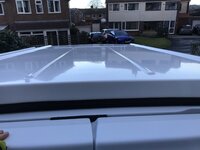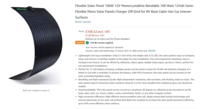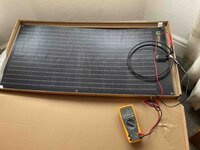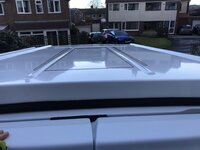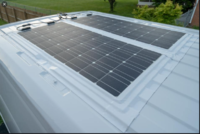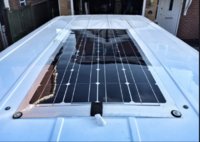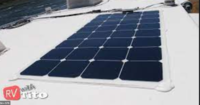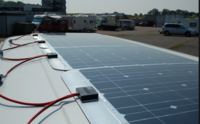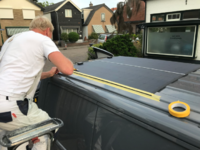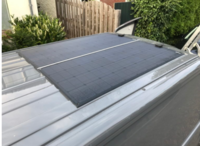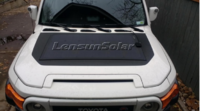@zoomequipped as always its a game of compromises, do you want to pay the extra cost per W to get the rear JB or do you want to get the best £/W. To me its more important to get the £/W but still keeping the low profile, there are loads of panels out there not all made equal of course and cheapest isn't always best however I am backing that most of the efficiencies comes from the MPPT controller so would rather sink more money into that. Just make sure you size the MPPT correctly especially if going 2+ panels. and as long as the cabling rats nest is presentable and not dramatically increases the final van height I am happy. But that decision and compromise is totally a personal choice and what ticks your boxes.
In respect to neatness, agree the rear JB would be amazing from that point of view. You will have equal issues of water ingress on both cabling glands...if not sealed correctly it will leak, I wouldn't say one is better than the other in this regard. At the end of the day, you are puncturing a perfectly good roof, so same risks are present with both.
The main thing to work out is (if youre going two panel path) is how you neat up the Series/Parallel cabling. If youre going single panel then this is a non issue. To me I'm not sure if I want to have all 4 cables going below the roof line, or make the + and - link connection for my series run on the roof by cutting the cable to size and securing it on the roof and then only have the standard 2 cable drop into the PopTop then VAN.
I use
Sikaflex 522 for sticking and sealing things on the camper and works fine. I am sure there are other bonding and sealing products around.
HANDLING AND FITTING MANUAL - Photonic Universe have made a cracking manual if you've not seen yet I've seen it posted somewhere on this forum before but cant remember original post probably
@Dellmassive will know. But read this, it shows you the different methods for mounting. The biggest takeaway is DO NOT SEAL THE EDGES they explain reasons why. They mention 2 approaches to mounting with Adhesive towards the bottom and show you the adhesive pattern which avoids any air trappings between the panel and the roof. I think option 1 (fitting it like bathroom tiles by back buttering the underside of the panel and applying adhesive to the roof) would be hard to ensure no air is trapped since we all have ridges to think about, so option 2 is the only one where you can make sure that doesn't happen in my opinion.
Also take a look at the
LenSun gallery, some great customer pictures around on that site with loads of mounting configurations to think about. And a lot of pictures to show you that the ridges on the roof are not much of a drama, to me it actually serves a good purpose to help pass air under the panels to cool them down a bit. Whether that really has any drastic impact I have no clue! But the theory surely makes it sound like it should haha

Sorry long post, but hope it helps answer some of your concerns fella, as I've literally just been going through all of this in my head last week haha.
EDIT:
@Dellmassive not sure if you've seen the new Victron MPPT calculator but its ace!! might be worth while adding it to your list of lists as I found that list so damn useful (thanks for all the effort by the way! I learn loads from your posts)
MPPT Calculator - Victron Energy

 www.solartechnology.co.uk
www.solartechnology.co.uk




